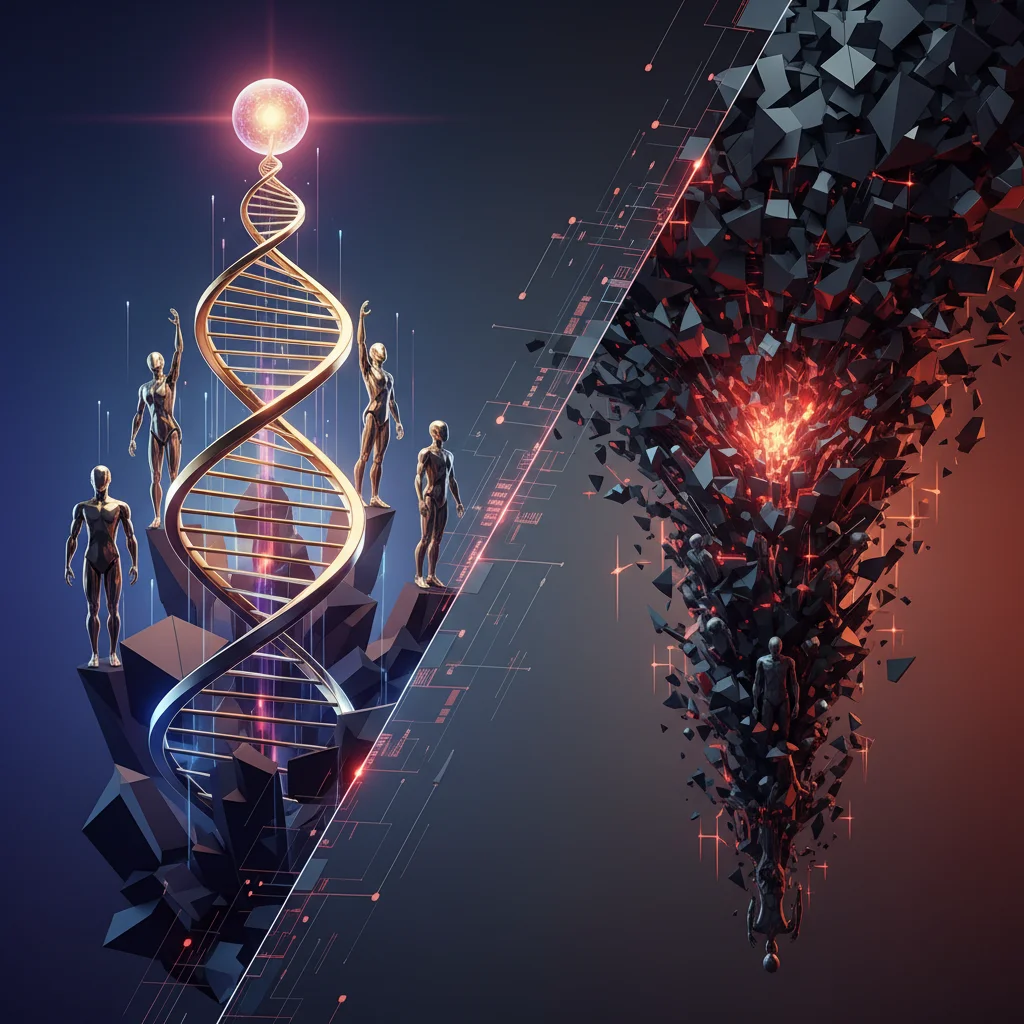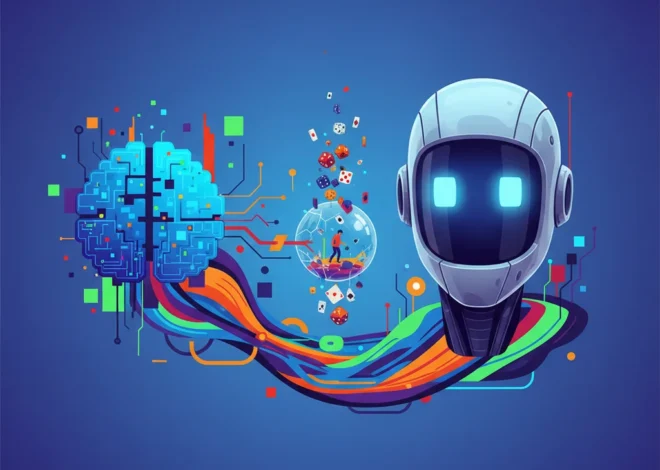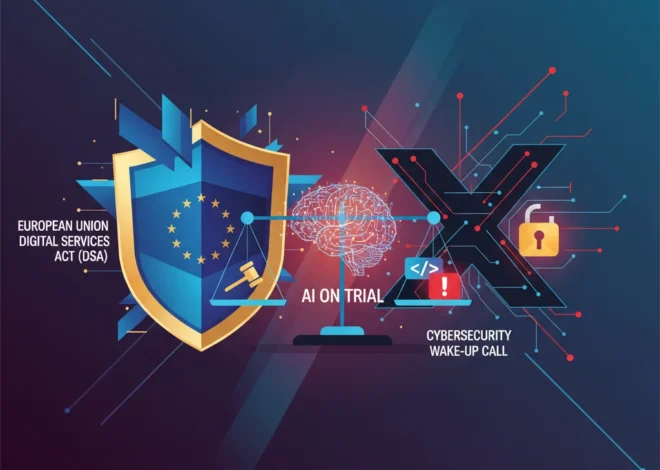
The AI Longevity Paradox: A Longer Life for the Few, or a Shorter One for the Many?
We stand at the precipice of a medical revolution, one powered not by scalpels or petri dishes, but by silicon and algorithms. The buzz around artificial intelligence is no longer confined to tech circles; it’s promising to rewrite the very code of human biology. From predicting diseases years before they manifest to designing bespoke drugs in a matter of weeks, AI is dangling the tantalizing prospect of a longer, healthier life. It’s a future that feels ripped from the pages of science fiction.
But as with any powerful new technology, a shadow follows the light. A recent, thought-provoking piece from the Financial Times poses a chilling question: will these advances be a tide that lifts all boats, or a tsunami that carves an even deeper chasm between the haves and the have-nots? The uncomfortable truth is that while AI might add decades to some lives, the socio-economic disruption it creates could tragically shorten others. This isn’t just a technological debate; it’s a profound social and ethical one that every developer, entrepreneur, and citizen needs to engage with.
Let’s unpack this paradox, exploring both the utopian promise and the potential dystopian fallout of AI’s integration into our lives and health.
The Fountain of Youth, Powered by Machine Learning
First, let’s acknowledge the sheer, breathtaking potential. The application of machine learning in healthcare isn’t a distant dream; it’s happening right now, driven by innovative startups and tech giants alike. The pace of innovation is staggering.
Here’s a glimpse of how AI is poised to extend our healthy years:
- Hyper-Accelerated Drug Discovery: Traditionally, finding a new drug is a decade-long, billion-dollar gamble. AI models can now sift through trillions of molecular combinations, predict their effectiveness, and identify promising candidates in a fraction of the time. Companies are using AI to design novel proteins and therapies that were previously unimaginable, targeting everything from cancer to rare genetic disorders.
- Precision and Personalized Medicine: Forget one-size-fits-all treatments. By analyzing your unique genetic makeup, lifestyle data, and medical history, AI can craft hyper-personalized health plans. This could mean a diet tailored to your microbiome, a cancer therapy designed for your specific tumor, or a precise prediction of your risk for Alzheimer’s, along with a custom-built preventative strategy. This is the ultimate healthcare SaaS (Software as a Service), delivered via the cloud to your physician.
- Early-Warning Diagnostics: The best cure is prevention, and AI is becoming our most powerful diagnostic tool. Machine learning algorithms are already outperforming human radiologists in spotting early signs of cancer in medical scans. According to some studies, AI can predict the onset of conditions like heart failure with startling accuracy (source), giving doctors a crucial head start. This level of diagnostic automation can save countless lives.
These breakthroughs promise a future where we don’t just live longer, but stay healthier and more vital for a larger portion of our lives. It’s a vision of humanity conquering its oldest foe: disease itself.
The Shadow War: Did China Steal UK Secrets, and What Does It Mean for Your Startup?
The Other Shoe Drops: Economic Stress and the New Health Divide
This is where the narrative takes a darker turn. The same engine of progress—AI-driven automation—that promises to heal our bodies could simultaneously inflict deep wounds on the body of society. The concern, as highlighted in the FT analysis, is that the benefits of AI-longevity will be concentrated at the top, while the negative consequences will cascade down to the most vulnerable.
The Widening Chasm of Access
Groundbreaking gene therapies and personalized AI-driven health plans won’t be cheap, at least not initially. This creates a terrifying scenario of a two-tiered health system. The wealthy may have access to treatments that could grant them decades of extra, healthy life, while the majority are left with a standard of care that falls further and further behind. Life expectancy, already correlated with wealth, could diverge so dramatically that we effectively see the emergence of a new, biologically elongated upper class.
Automation, Stress, and “Deaths of Despair”
The most insidious threat isn’t just a lack of access to new cures; it’s the erosion of the very foundations of a healthy life. AI and automation aren’t just coming for factory jobs; they’re impacting roles across the board—from truck drivers and call center agents to paralegals and even entry-level programming jobs. As the FT article alludes, this widespread economic disruption is a potent health hazard.
Decades of public health research show a clear link between unemployment, financial instability, and poor health outcomes. Chronic stress from job insecurity weakens the immune system, increases the risk of heart disease, and contributes to mental health crises. The rise in so-called “deaths of despair”—suicides, drug overdoses, and alcohol-related liver disease—has already been linked to economic decline in certain communities. Widespread AI-driven job displacement could pour fuel on this fire, potentially lowering life expectancy for entire demographics.
To visualize this divergence, consider the potential futures for two different individuals in the age of AI:
| Metric | The AI-Enhanced Individual | The Economically Displaced Individual |
|---|---|---|
| Healthcare Access | Bespoke, AI-driven preventative care, gene therapies, and personalized medicine. | Standardized, overburdened public systems; delayed diagnoses and limited access to cutting-edge treatments. |
| Career & Job Security | High-demand roles augmenting AI; continuous learning and upskilling in a growth sector. | High risk of job displacement due to automation; chronic stress from financial instability. |
| Mental Well-being | Sense of control, optimism, and access to sophisticated AI-powered wellness tools. | Anxiety, depression, and a sense of being left behind by technological progress. |
| Projected Lifespan | Significant increase, with a healthy lifespan potentially exceeding 100 years. | Stagnation or even a decrease due to the cumulative effects of stress and unequal healthcare access. |
Code on the Frontline: Why Europe's Military Needs a Silicon Valley Reboot
The real challenge for the tech community—for the startups seeking funding and the developers building the next generation of software—is to shift the focus. The most profound innovation won’t be another algorithm that predicts disease with 99.9% accuracy. It will be the new SaaS model that delivers that prediction affordably to a rural clinic via the cloud. It will be the ethical framework built into the AI to ensure it doesn’t perpetuate existing biases in medical data. The future of AI in health isn’t just about making humans live longer; it’s about making a longer life accessible and meaningful for all humans. That’s a much harder problem to solve, and a far more worthy one.
Forging an Equitable Future: The Path Forward
So, how do we harness the incredible power of artificial intelligence to lengthen lives without simultaneously shortening them through social and economic turmoil? The solution requires a multi-faceted approach, with responsibility shared among technologists, entrepreneurs, and policymakers.
For Developers and Tech Professionals: Build with Conscience
The people building these systems have an ethical obligation to consider their impact. This means prioritizing:
- Ethical AI by Design: Integrate fairness, transparency, and accountability directly into the machine learning models. Actively work to de-bias training data to ensure health solutions work for everyone, not just the populations that are overrepresented in medical research.
- Robust Cybersecurity: As healthcare becomes more connected, it becomes a bigger target. Building Fort Knox-level cybersecurity into health-tech isn’t an option; it’s a moral imperative to protect sensitive patient data and ensure the integrity of AI-driven treatments.
- Accessibility: Design systems that can be deployed in low-resource environments. Think about building lightweight models that can run on less powerful hardware or developing interfaces that are intuitive for healthcare workers in diverse settings.
For Entrepreneurs and Startups: Innovate on Access
The biggest market opportunity isn’t just serving the elite. There is immense potential in building scalable, affordable solutions that democratize health.
- Focus on Prevention: Create low-cost AI tools that focus on preventative care, lifestyle management, and early diagnosis for the masses. A SaaS platform that helps millions manage their diabetes effectively is more impactful than a boutique gene therapy for a few hundred.
- Rethink Business Models: Explore models that align with public health goals. Partner with governments, NGOs, and community health organizations to deploy your technology where it’s needed most.
Is the AI Boom a High-Tech Cargo Cult?
For Society and Policymakers: Create a Safety Net
Technology alone cannot solve this. We need a societal framework that mitigates the shocks of the AI transition.
- Proactive Education & Reskilling: We need massive investment in lifelong learning programs to help workers adapt to an economy where they collaborate with AI.
- Modernize the Social Contract: Serious conversations about policies like Universal Basic Income (UBI), portable benefits, and universal healthcare are no longer academic. They are becoming essential components of a stable society in an age of automation. As one expert noted, without a robust safety net, the societal stress could be immense (source).
The Choice Ahead
Artificial intelligence is not inherently good or evil. It is a mirror that reflects the values we pour into it and a magnifier of the societal structures already in place. It has the potential to usher in an unprecedented era of human health and longevity, but it could just as easily entrench inequality and create a world of biological castes.
The future where AI lengthens lifespans for everyone is not the default setting; it’s the one we must actively, deliberately, and collaboratively build. The question is no longer *if* AI will change our lives, but *how* we will choose to direct that change.


